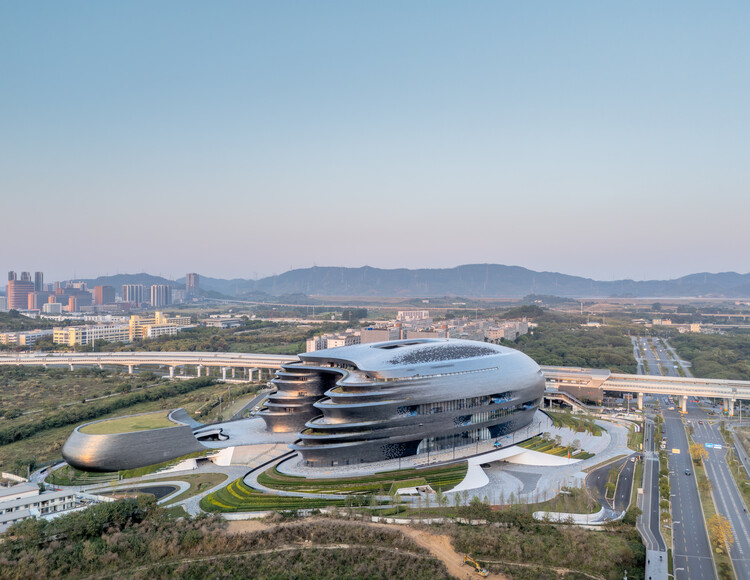
Zaha Hadid Architects has just revealed that the Shenzhen Science & Technology Museum, located in the Guangming District, has officially opened. Designed as a platform to highlight scientific research and technological innovation, the institution will explore the role of science in shaping the future. Adjacent to Guangming Station on Shenzhen‘s metro network, the design responds to its location as a solid, spherical volume facing the city, defining the southeast corner of the new Science Park. The museum aims to provide a space for public engagement with current developments in science and technology.
Positioned as a key cultural destination within the Greater Bay Area, one of the world’s most populous metropolitan regions with nearly 100 million residents, the museum is set to engage with the area’s prominent technology sectors, academic institutions, and research centers. Through these collaborations, the institution aims to foster innovation and highlight Shenzhen’s role as a global hub for technological advancement. The Shenzhen Science & Technology Museum encompasses 35,000 square meters of permanent and temporary exhibition areas, 6,000 square meters dedicated to immersive theaters and cinemas, and 5,400 square meters allocated to research laboratories, educational spaces, and an innovation center. An additional 34,000 square meters accommodates visitor amenities, storage, and support facilities, including production and maintenance workshops.
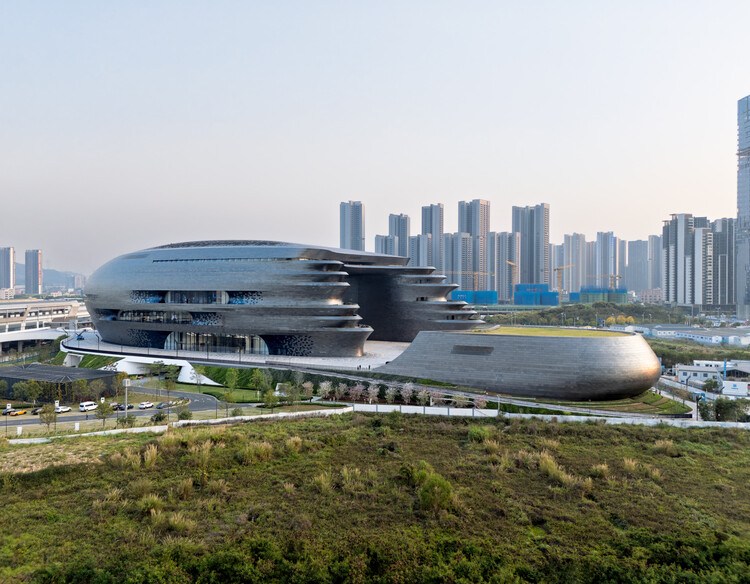
Extending westward into the surrounding parkland, the museum’s form transitions into a series of outdoor terraces that overlook the landscape. These terraces serve as functional continuations of the interior galleries that encircle a central atrium. Galleries emerge from the atrium floor and walls, while others are suspended above, forming a spatial arrangement that visually guides visitors through the museum’s interconnected volumes. A fully glazed wall facing the park integrates the building with its surroundings, allowing daylight and exterior views to penetrate the atrium and creating a fluid transition between interior and exterior.
In response to Shenzhen’s subtropical climate, the building incorporates passive environmental strategies optimized through advanced computer simulations. These analyses informed the overall form, orientation, and envelope design, balancing solar exposure, temperature regulation, air quality, and prevailing wind conditions. The building is oriented to minimize solar gain within the atrium while preserving visual access to the adjacent park.
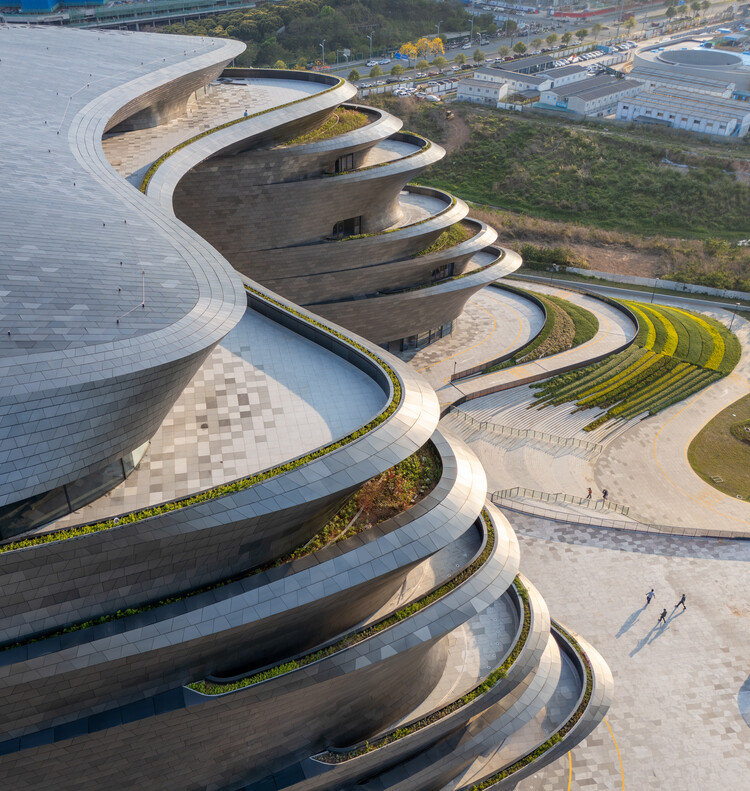
Further mitigating heat gain, a ventilated cavity façade system composed of stainless-steel panels envelops the building. This system, which extends over the roof, contributes to passive cooling while incorporating photovoltaic panels to enable on-site energy generation. The museum features the first large-scale use of dual-color INCO stainless-steel technology in China. By controlling the electrolyte composition and oxidation timing, a nanoscale oxide layer is formed, offering both corrosion resistance and self-cleaning properties.
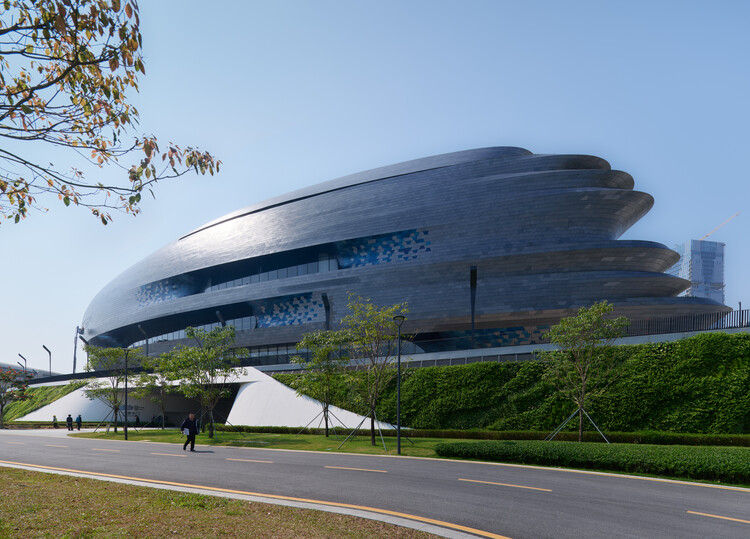
Targeting the highest rating under China‘s Green Building Evaluation Standard, the museum incorporates passive design and smart building systems to achieve a projected energy consumption of 15.47 kgce/sqm per year and electricity demand of 125.89 kWh/sqm annually. Water conservation strategies include greywater recycling and rainwater harvesting, estimated to reduce consumption to 14,906 cubic meters per year. Additionally, the construction materials included approximately 389,239 tonnes of recycled content.
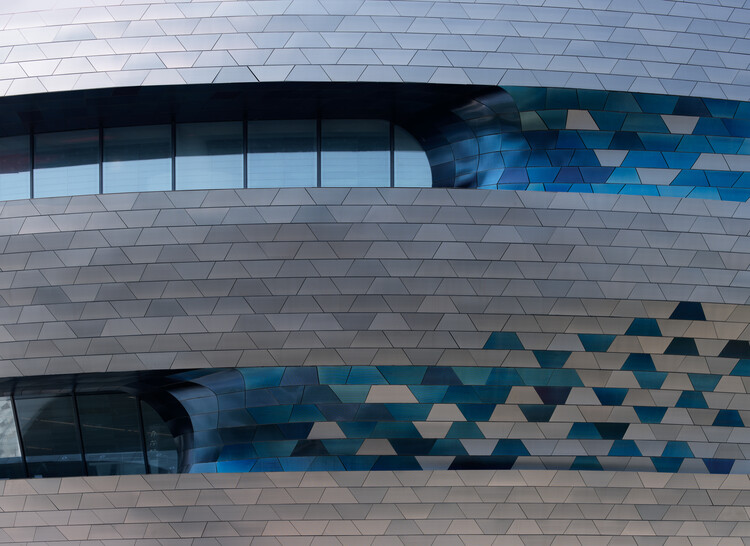
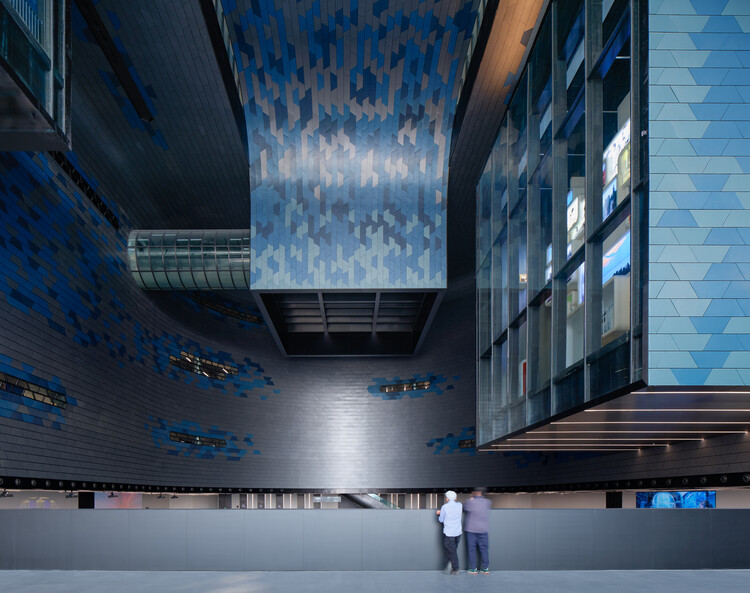
The project’s digital twin construction process utilized BIM and 3D scanning technology to maintain millimeter-level precision in the fabrication of complex surfaces. A comprehensive network of key nodes throughout the building facilitated real-time verification, ensuring that construction aligned with the digital simulation. Additionally, robotic multi-point forming technology was employed to precisely shape the intricate surfaces according to the exact specifications of the design.
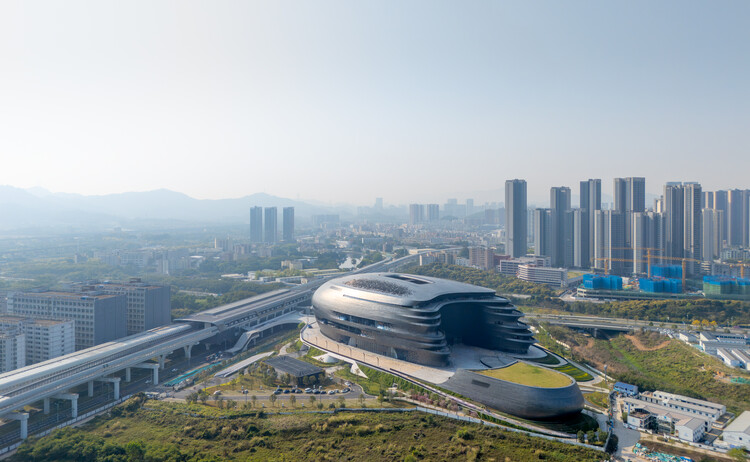
In other construction updates from Zaha Hadid Architects, the Greater Bay Area Sports Centre in Nansha, China, is near completion and expected to be completed by June 2025, ahead of its role as a key venue for the China National Games in November. Meanwhile, Cityzen Tower, a 42-story high-rise poised to become a landmark in Tbilisi, Georgia, is set for completion in 2028, marking Zaha Hadid Architects’ first project in Georgia. Earlier this year, the firm also announced the groundbreaking for the Centre of Mediterranean Culture in Reggio Calabria, Italy.














